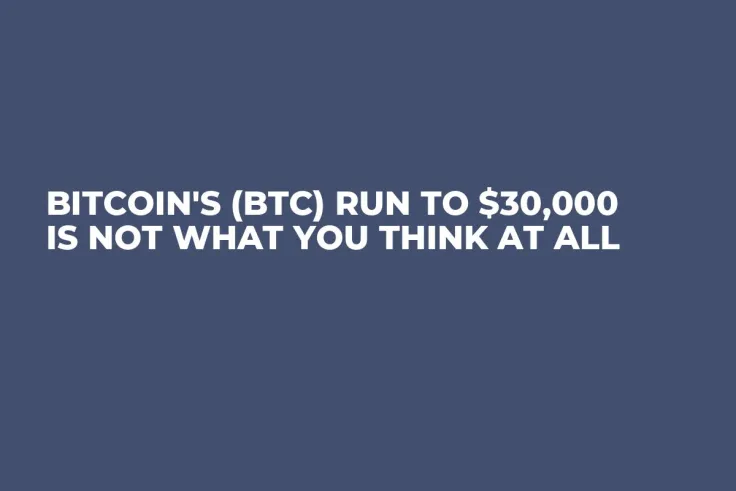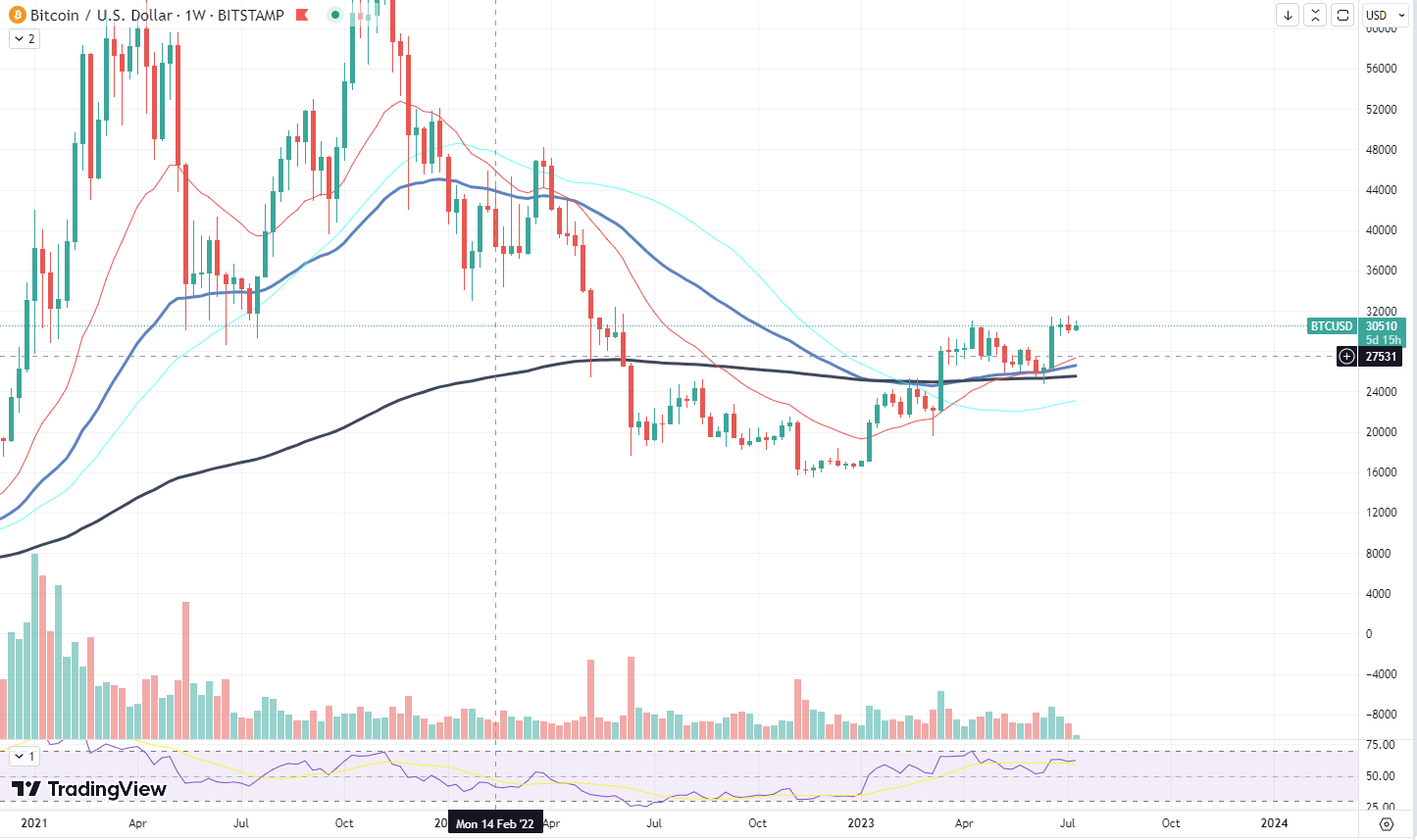
Disclaimer: The opinions expressed by our writers are their own and do not represent the views of U.Today. The financial and market information provided on U.Today is intended for informational purposes only. U.Today is not liable for any financial losses incurred while trading cryptocurrencies. Conduct your own research by contacting financial experts before making any investment decisions. We believe that all content is accurate as of the date of publication, but certain offers mentioned may no longer be available.
When analyzing the run of Bitcoin (BTC) to $30,000, one might be tempted to think that this was a slow and steady rise over time. However, the reality tells a different story. Data from a study by J.P. Morgan Asset Management shows that 90% of Bitcoin's growth since the beginning of 2023 was driven by just nine significant trading days. The majority of the 200 trading days were neutral, with the market slowly retracting after step-like growth.
The idea of a handful of "best days" driving the majority of an asset's growth is not a new concept, and it applies to other markets as well. For instance, an investor, who put money into the S&P500 index from 1999 to 2018, would have seen an average annual return of 5.62%. However, if the investor missed the 10 best trading days during this period, the annual return would drop dramatically to 2.01%.

Missing more of the top-performing days leads to even more striking results. If the same investor missed the 20 best trading days, their annual return would turn negative at -0.33%. If they missed the 30 best days, the return would fall to -1.97%, and if they missed the 40 best days, the return would plummet to -3.35%. If they missed the top 50 trading days, their annual return would have been an abysmal -4.45%.
This data underscores a common saying in the financial sector: "Time in the market is more important than timing the market." Investors who try to time the market, i.e., buy low and sell high, often miss out on the best days. Those who stay invested for a longer duration, however, are more likely to reap substantial returns.
In the case of Bitcoin, this means that even though most trading days may seem uneventful, a few key days could have a substantial impact on investment returns. Hence, Bitcoin's run to $30,000 might not be as straightforward as one might think, but it is those explosive days that count on the crypto market.

 Godfrey Benjamin
Godfrey Benjamin Tomiwabold Olajide
Tomiwabold Olajide Denys Serhiichuk
Denys Serhiichuk Gamza Khanzadaev
Gamza Khanzadaev